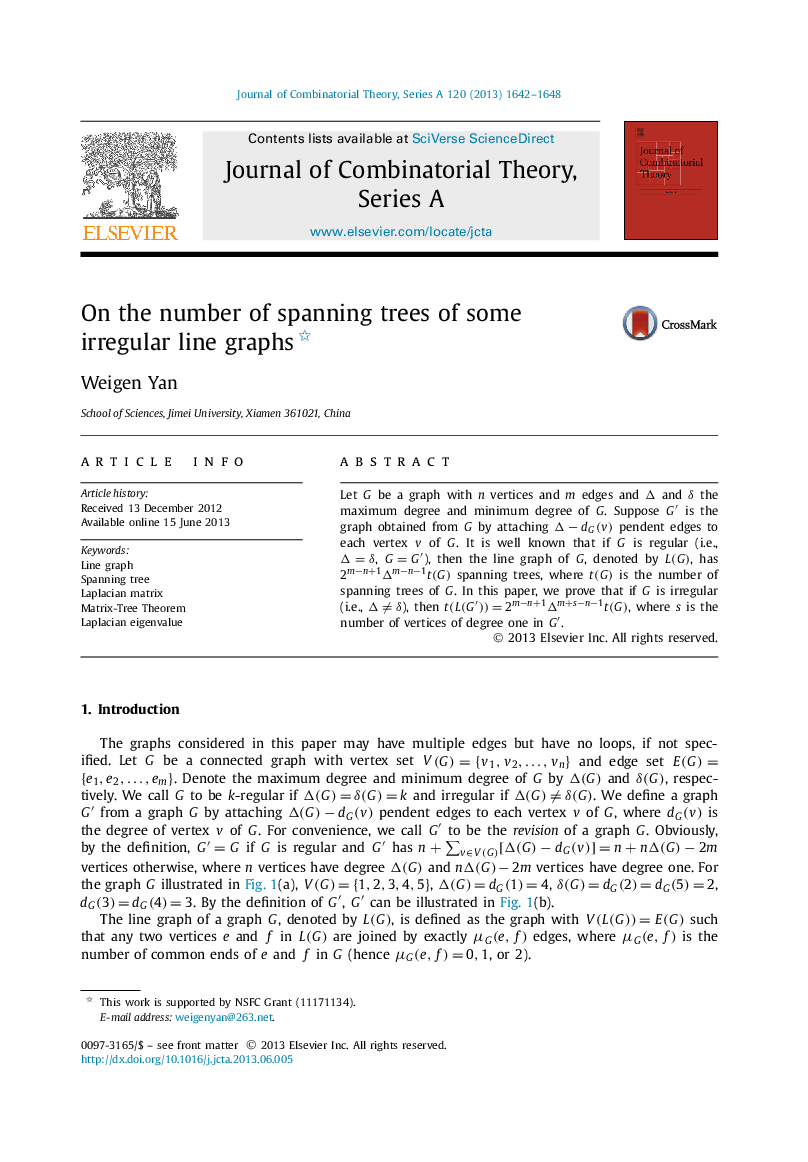| Article ID | Journal | Published Year | Pages | File Type |
|---|---|---|---|---|
| 4655430 | Journal of Combinatorial Theory, Series A | 2013 | 7 Pages |
Abstract
Let G be a graph with n vertices and m edges and Δ and δ the maximum degree and minimum degree of G . Suppose G′G′ is the graph obtained from G by attaching Δ−dG(v)Δ−dG(v) pendent edges to each vertex v of G. It is well known that if G is regular (i.e., Δ=δΔ=δ, G=G′G=G′), then the line graph of G , denoted by L(G)L(G), has 2m−n+1Δm−n−1t(G)2m−n+1Δm−n−1t(G) spanning trees, where t(G)t(G) is the number of spanning trees of G. In this paper, we prove that if G is irregular (i.e., Δ≠δΔ≠δ), then t(L(G′))=2m−n+1Δm+s−n−1t(G)t(L(G′))=2m−n+1Δm+s−n−1t(G), where s is the number of vertices of degree one in G′G′.
Related Topics
Physical Sciences and Engineering
Mathematics
Discrete Mathematics and Combinatorics
Authors
Weigen Yan,
